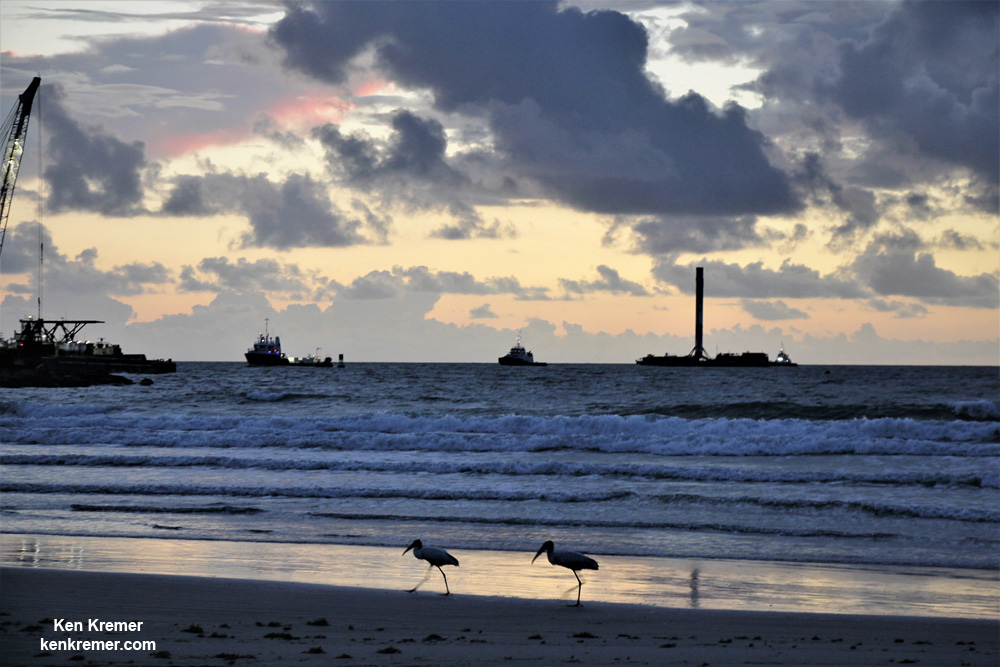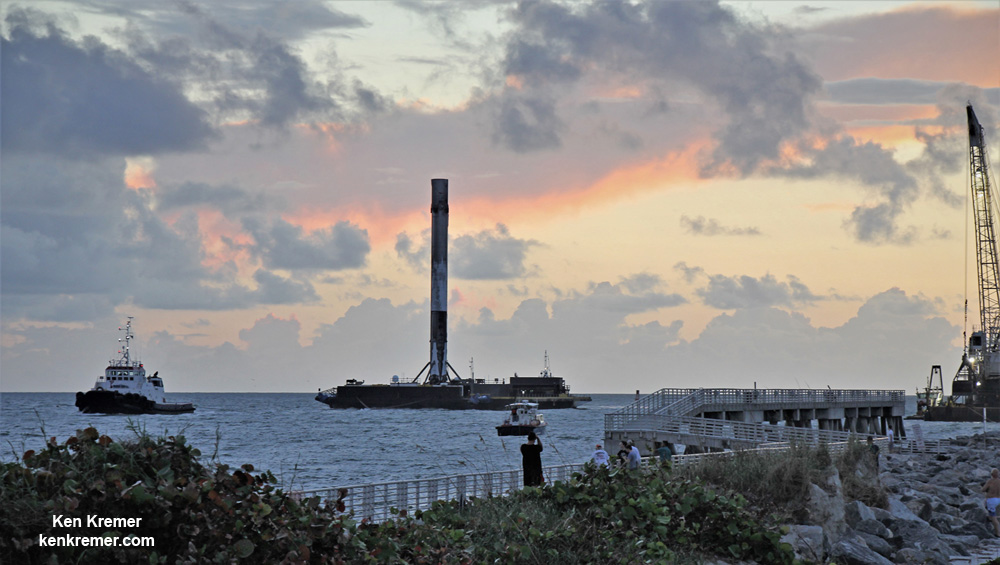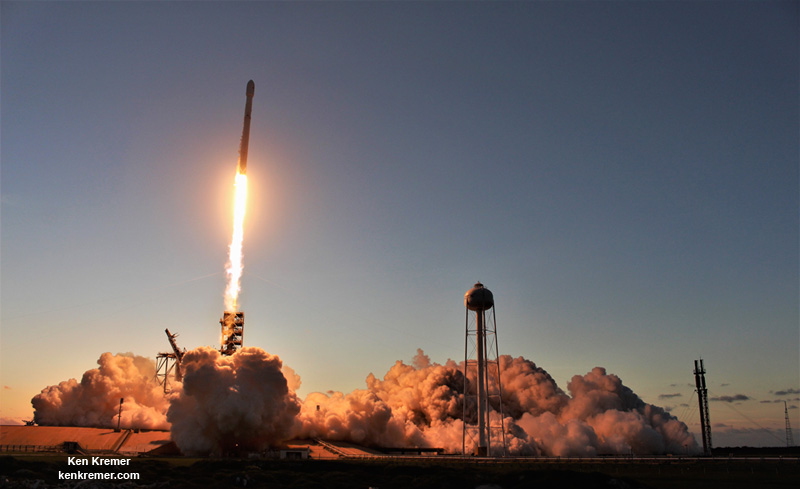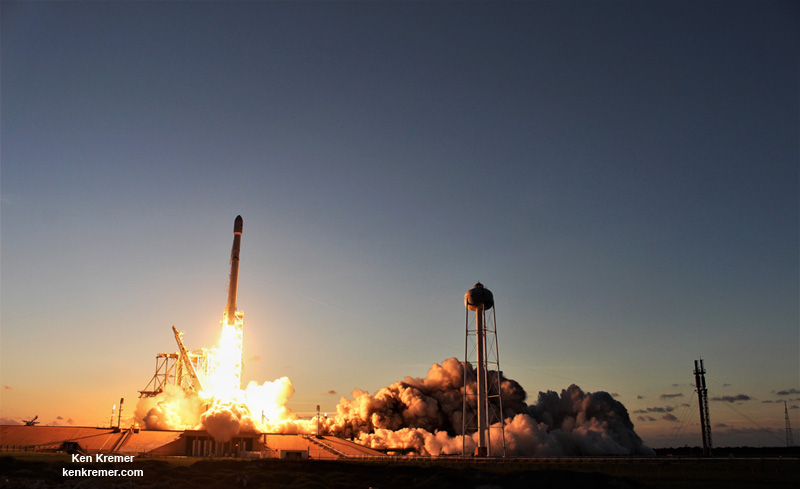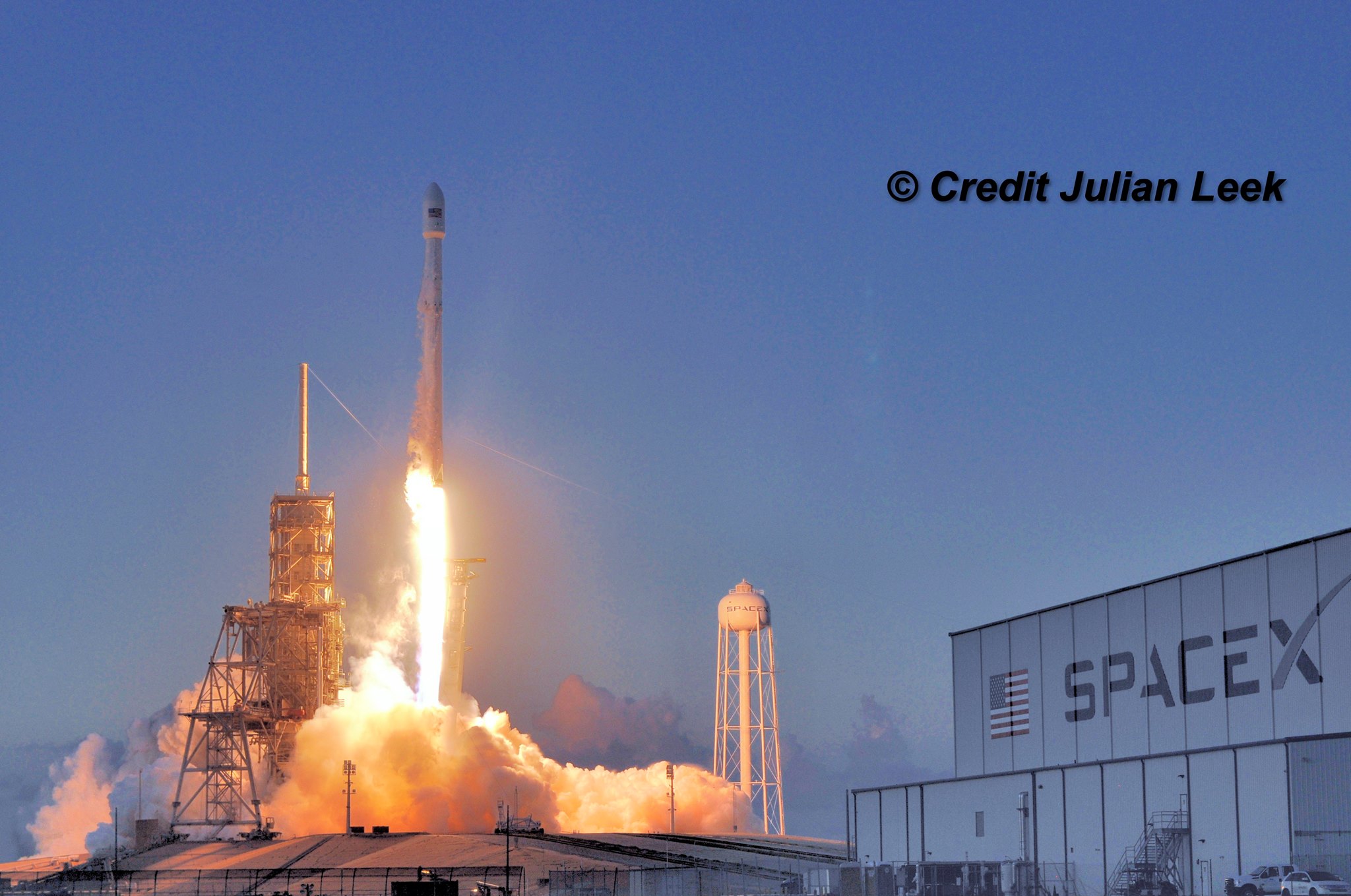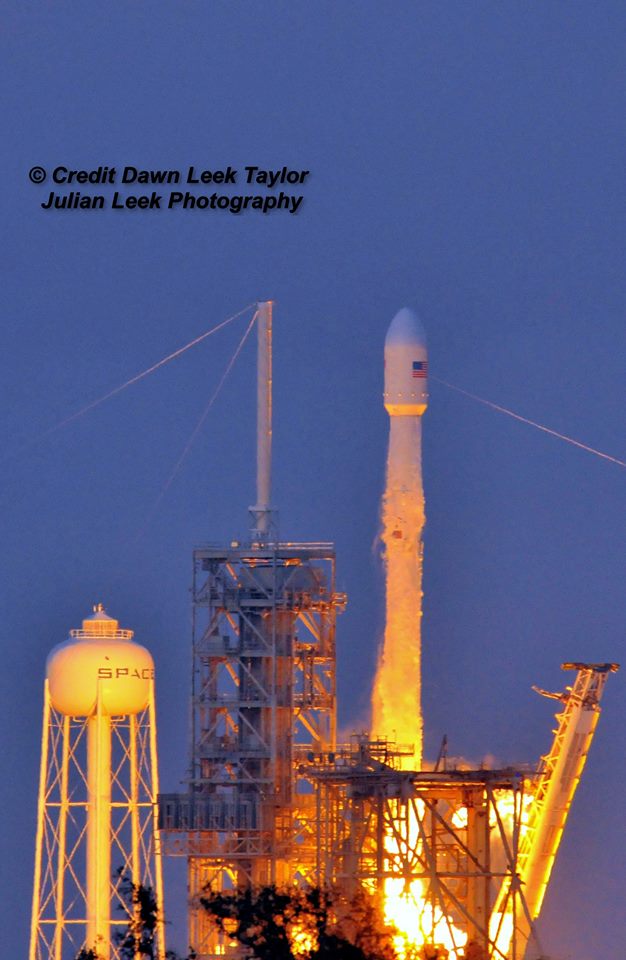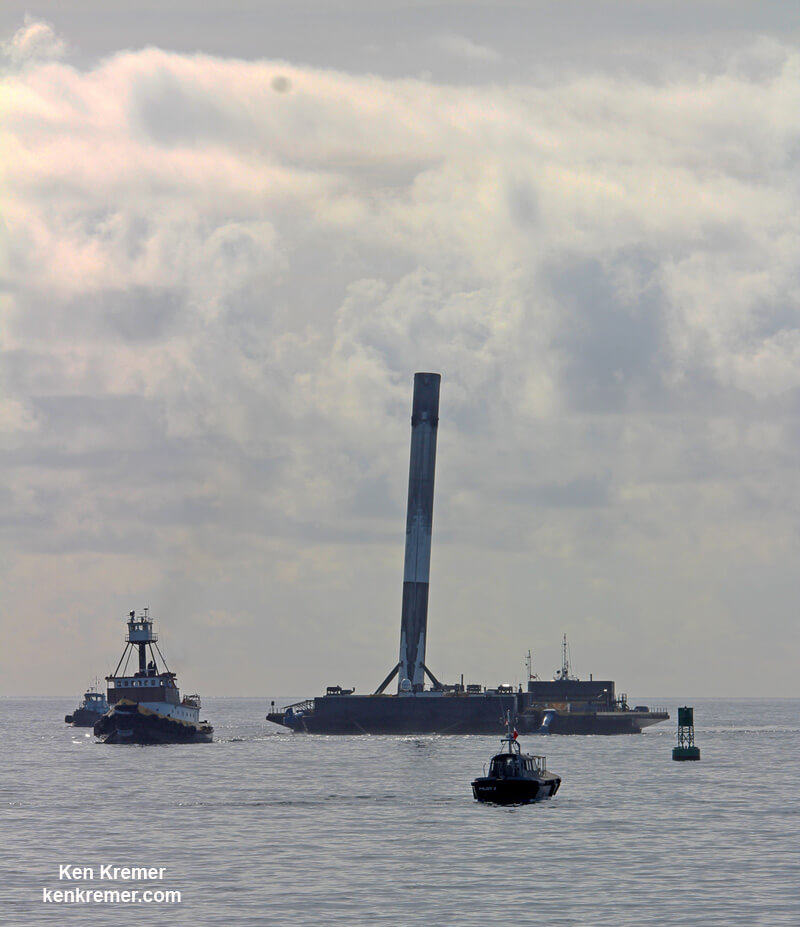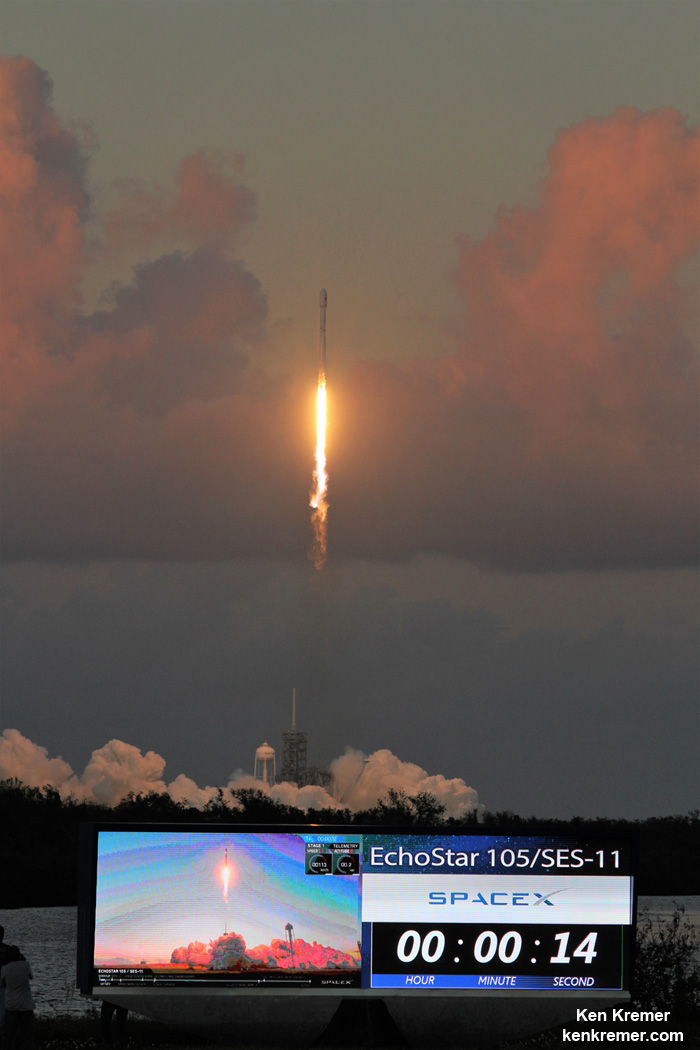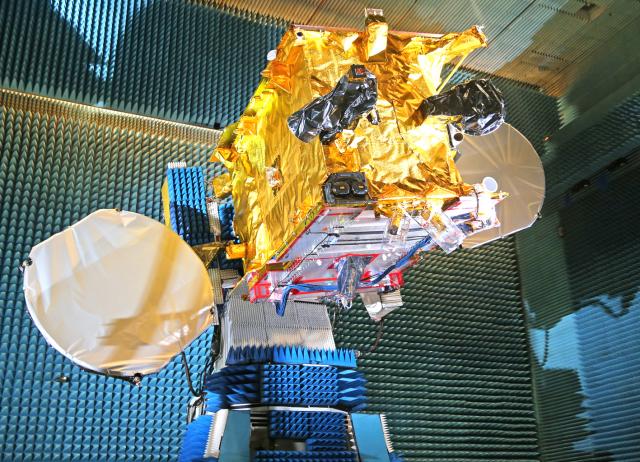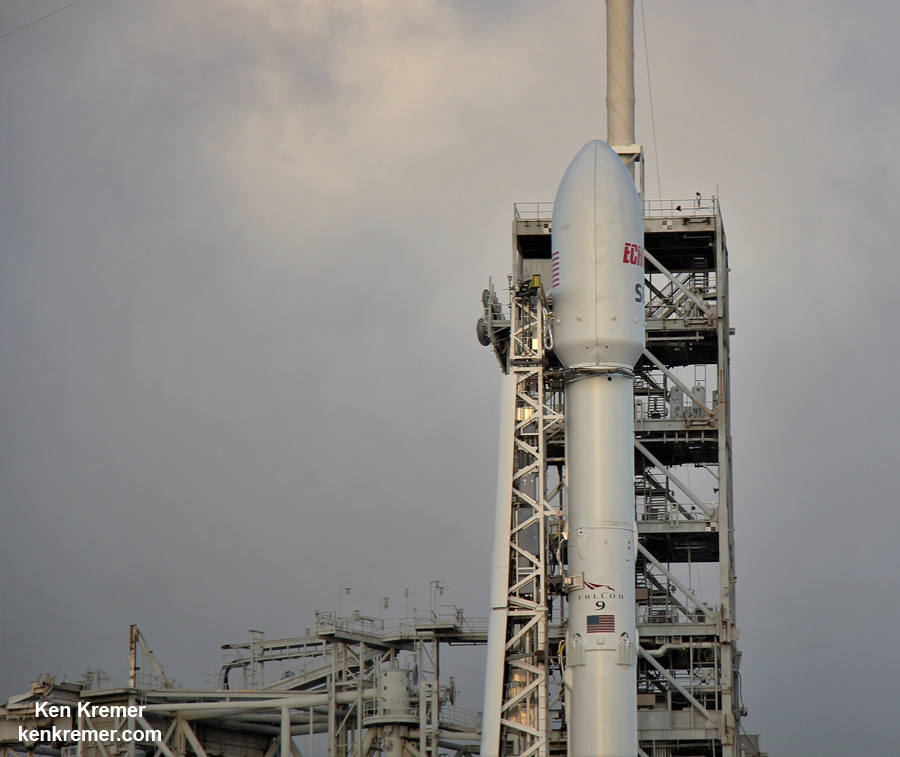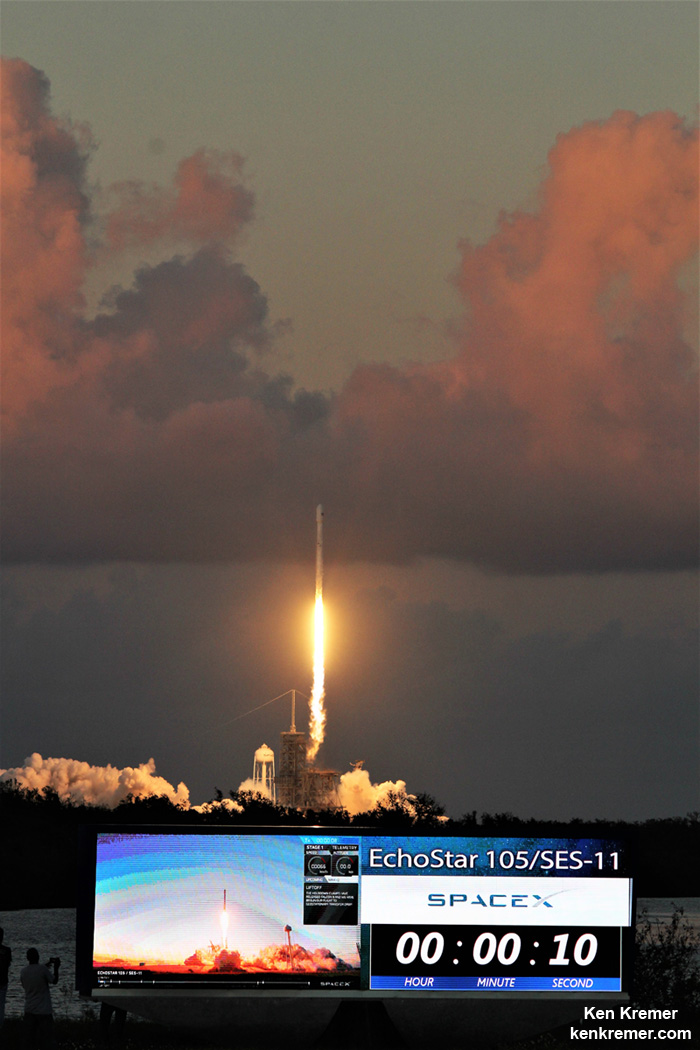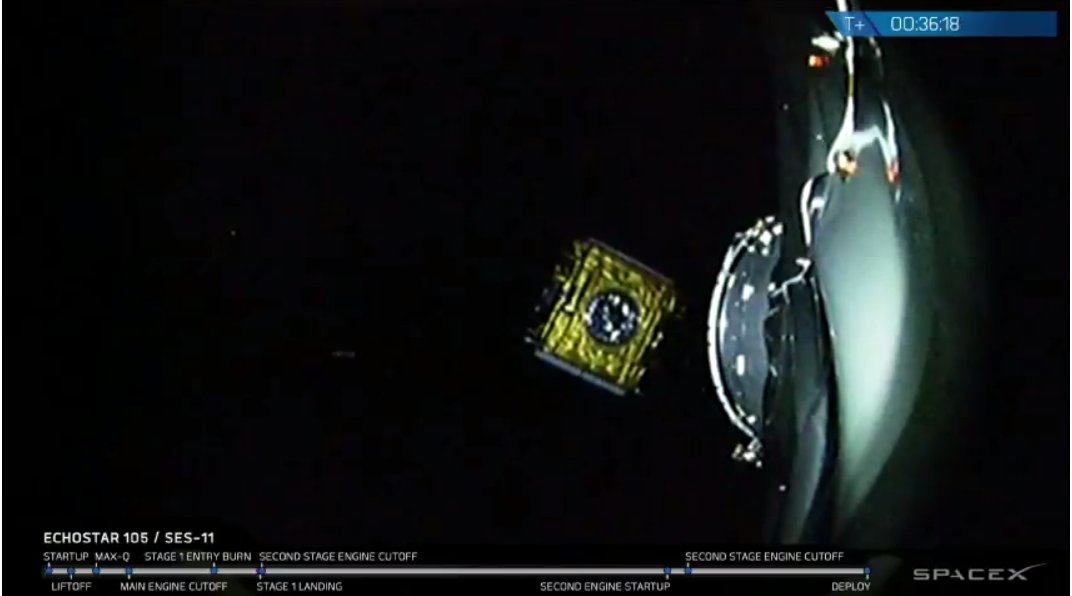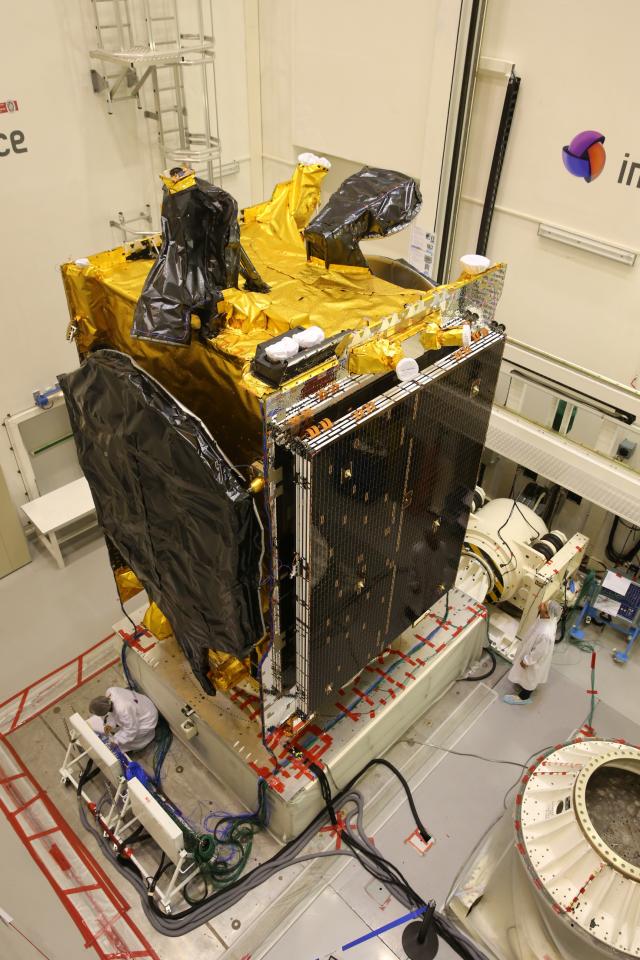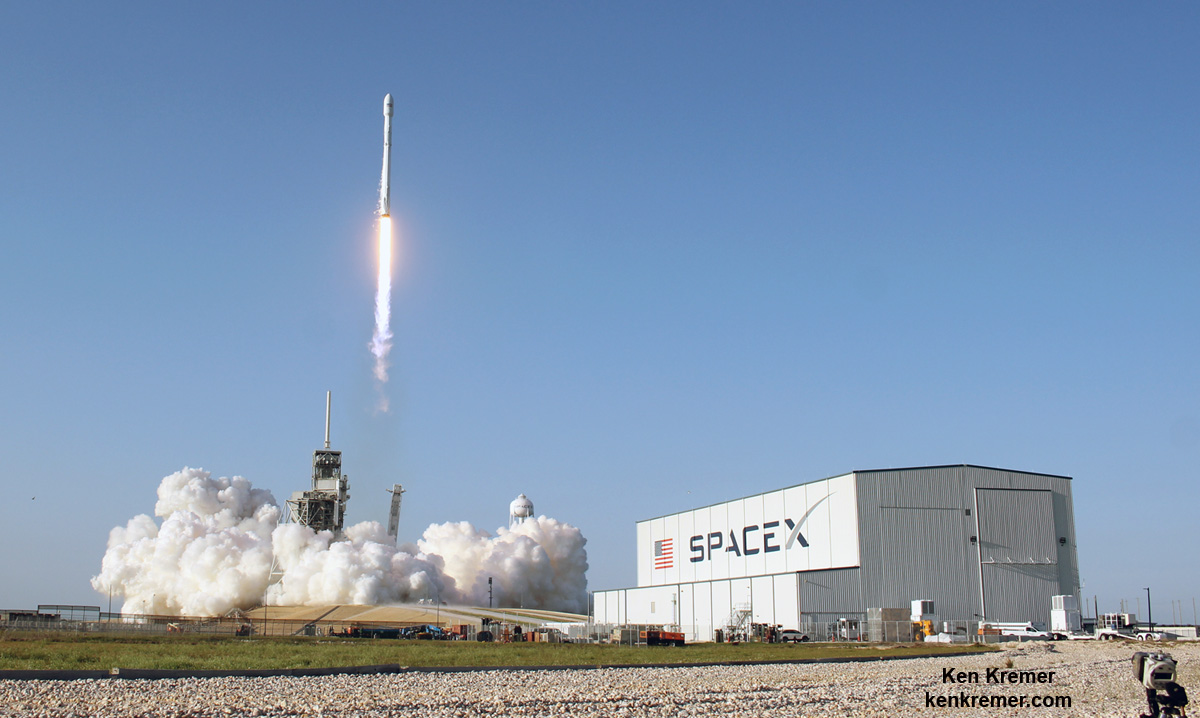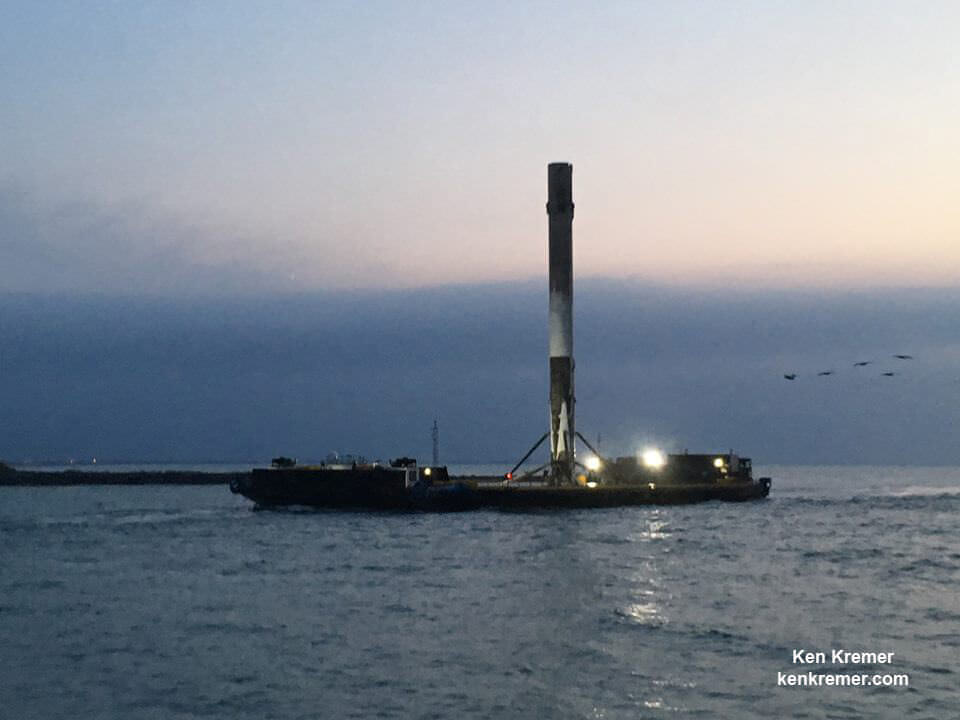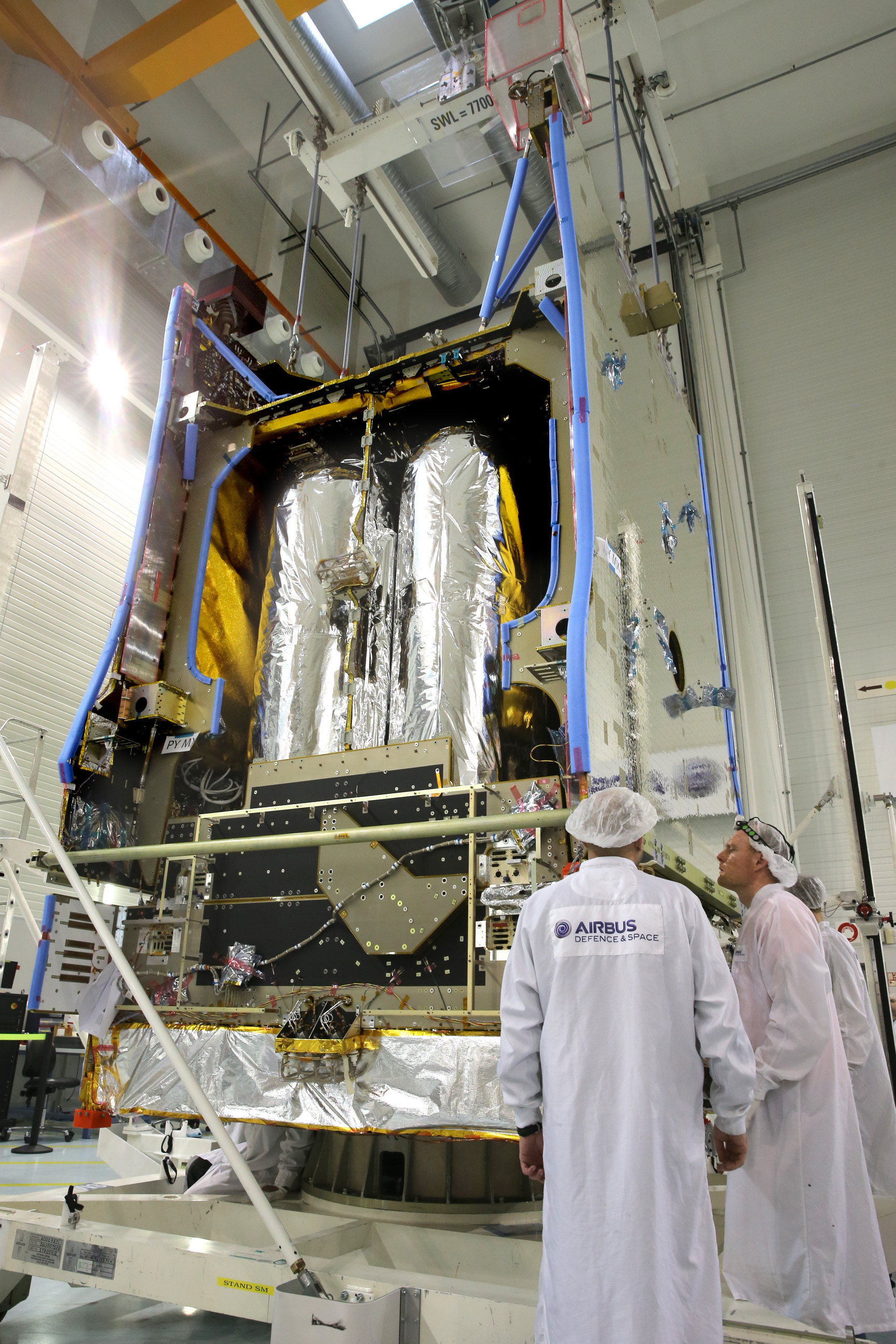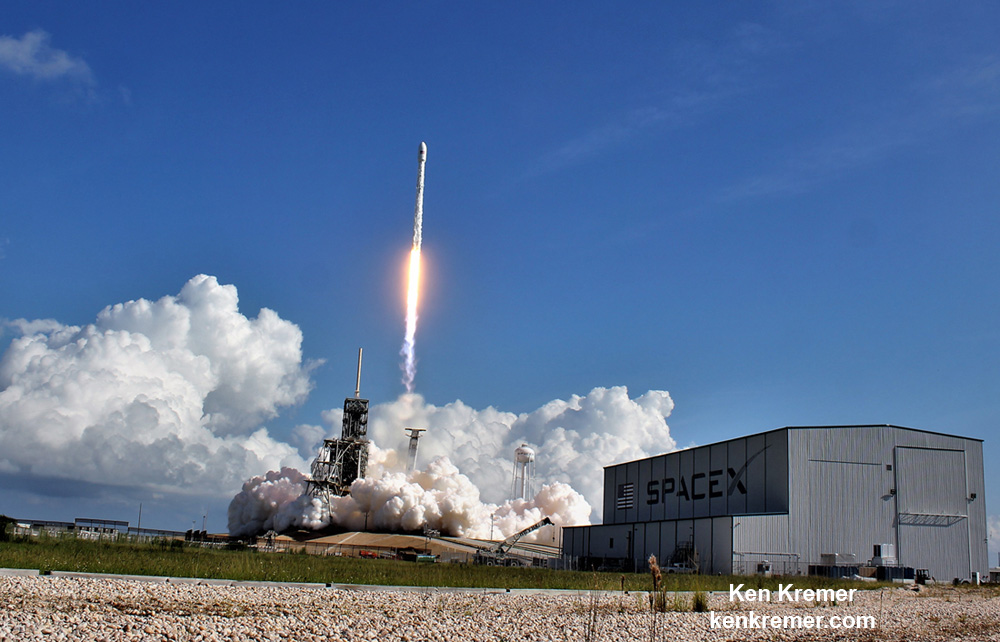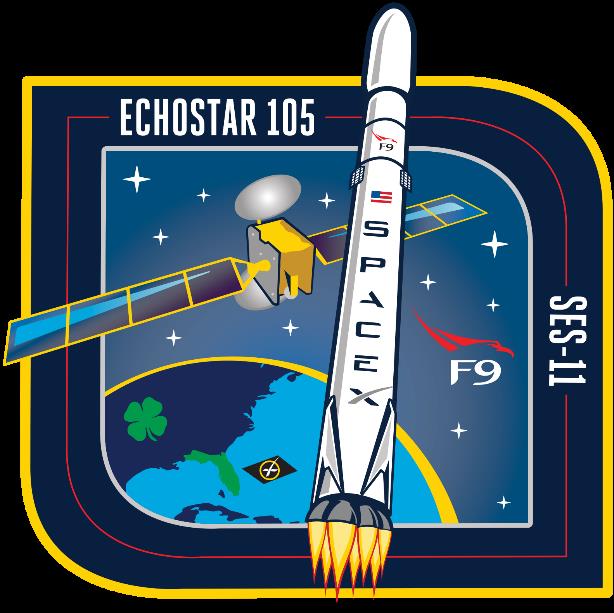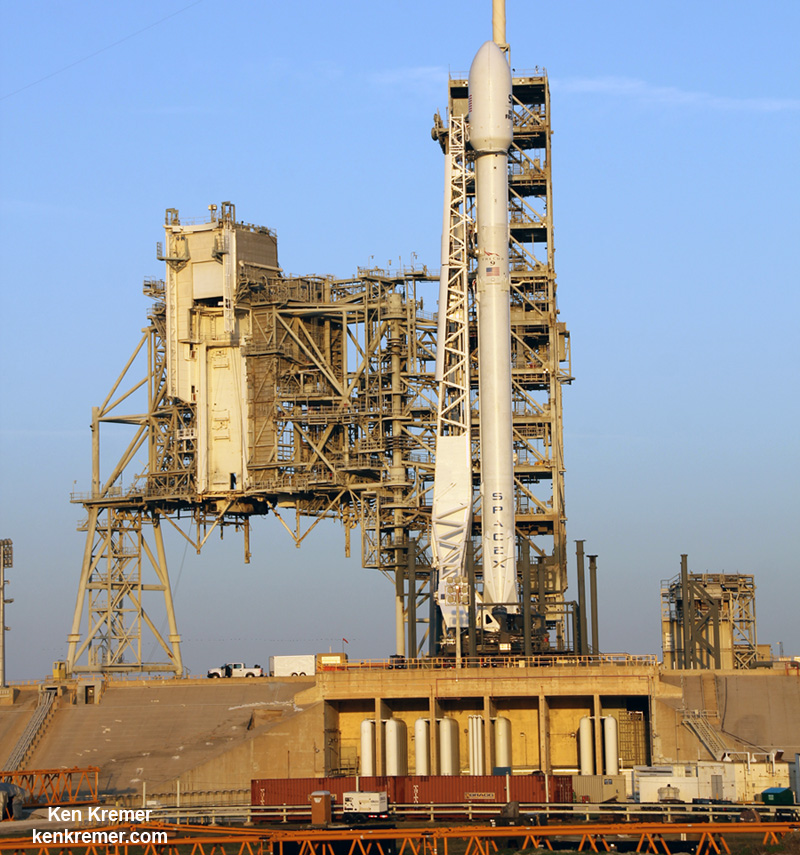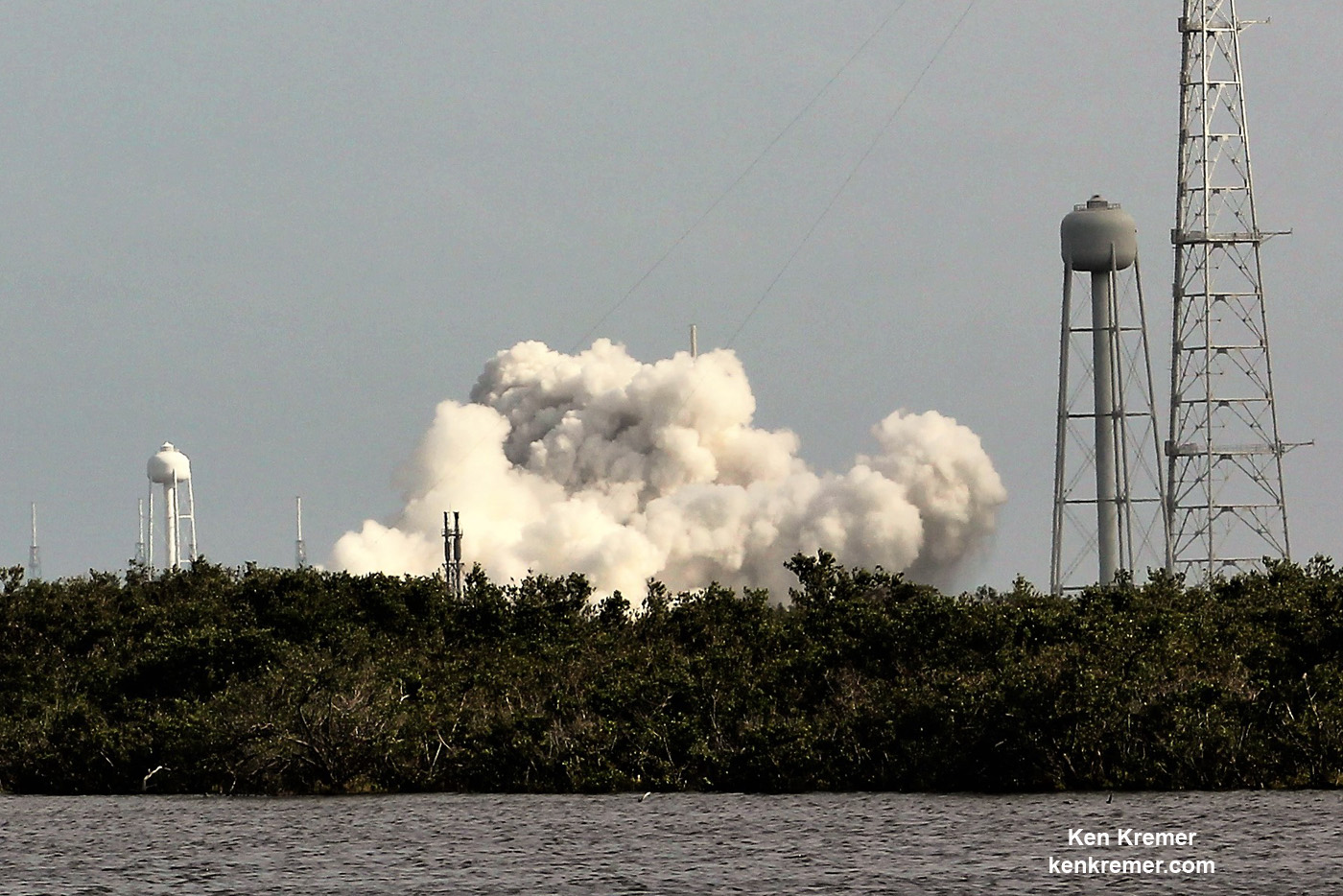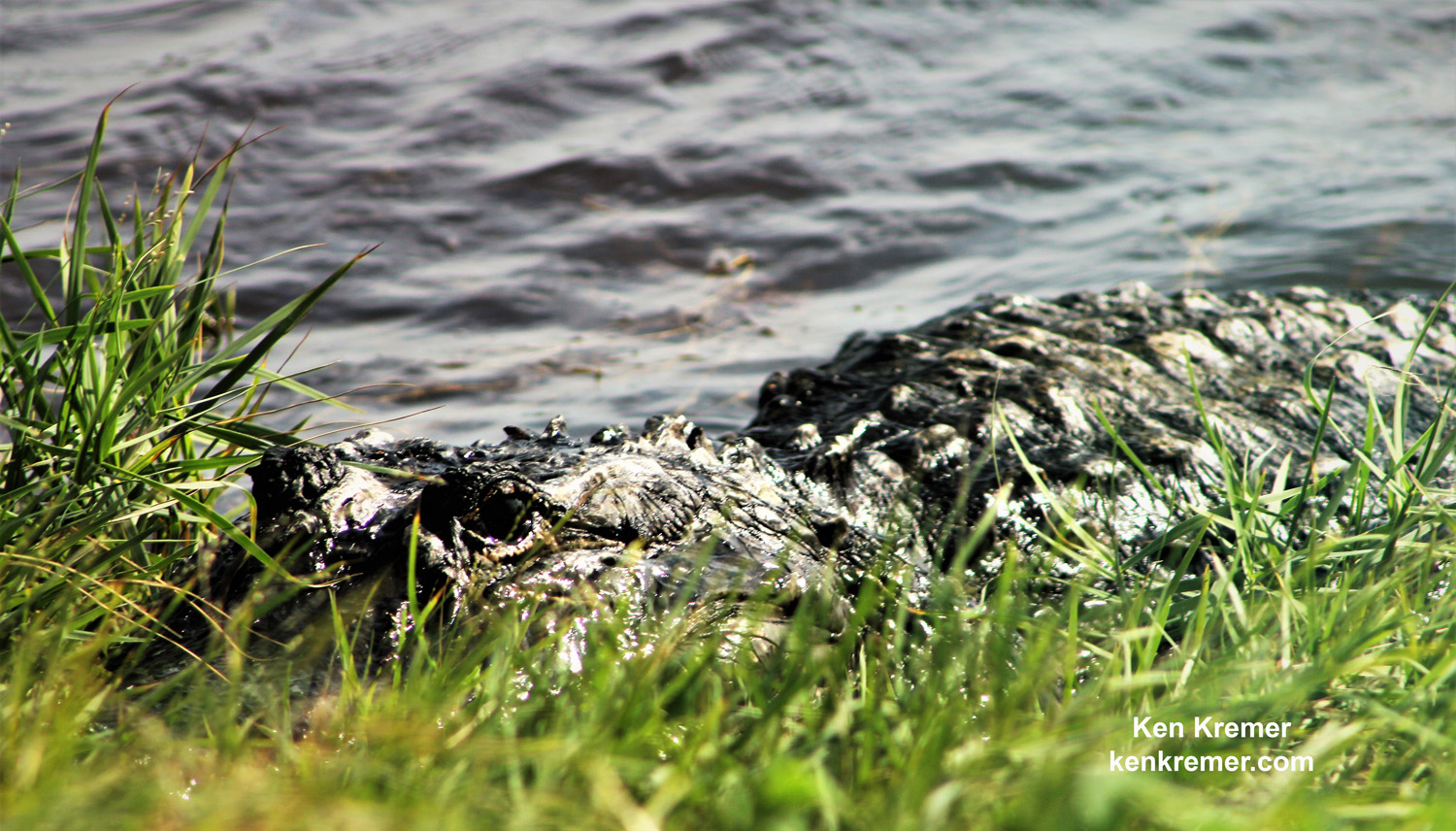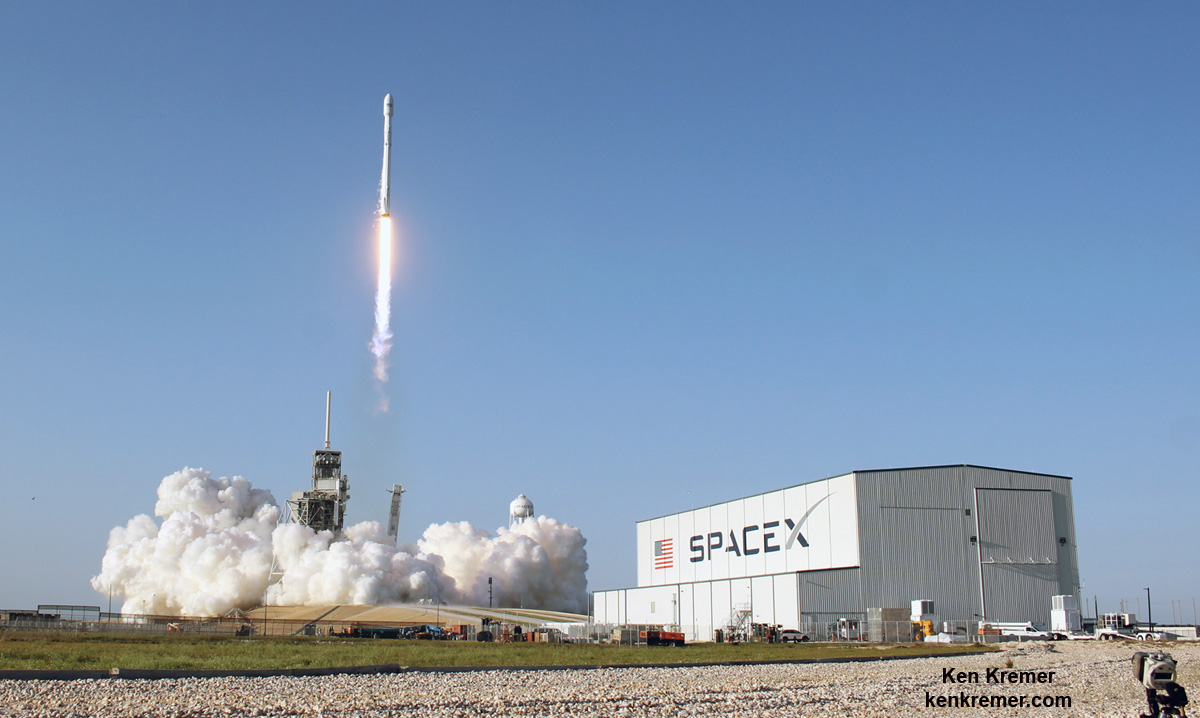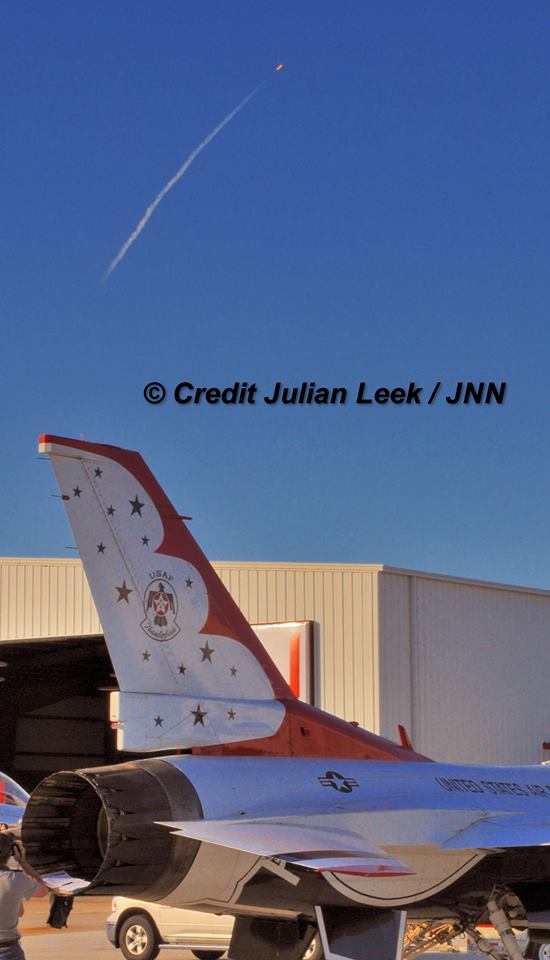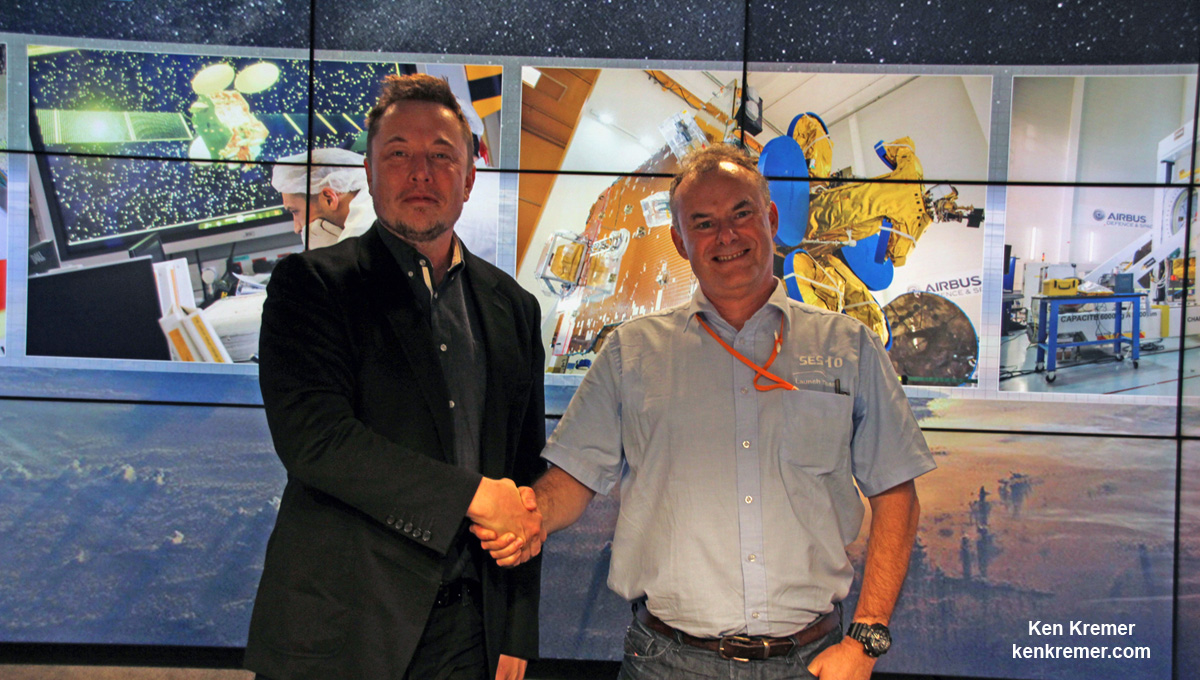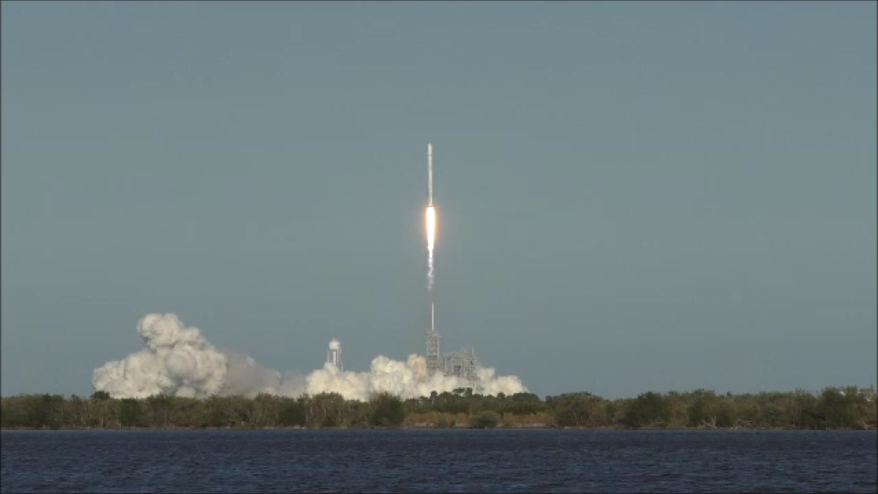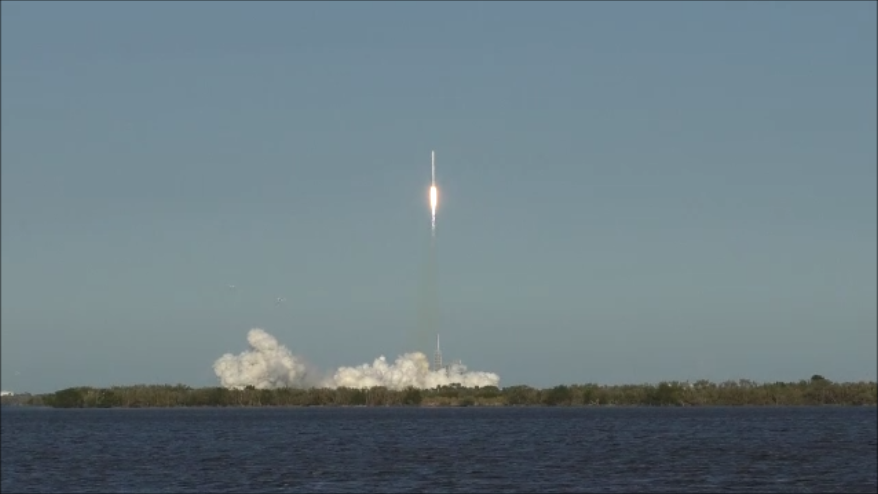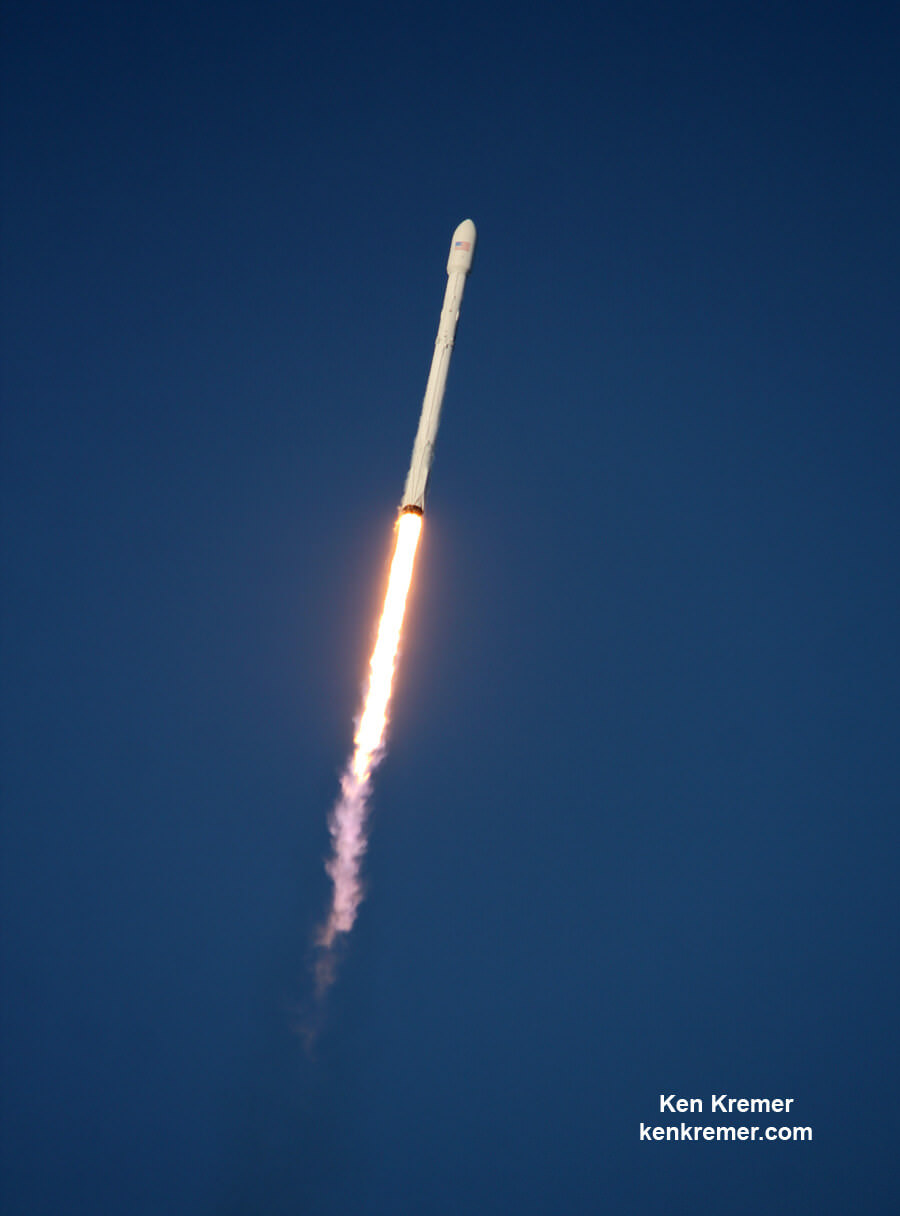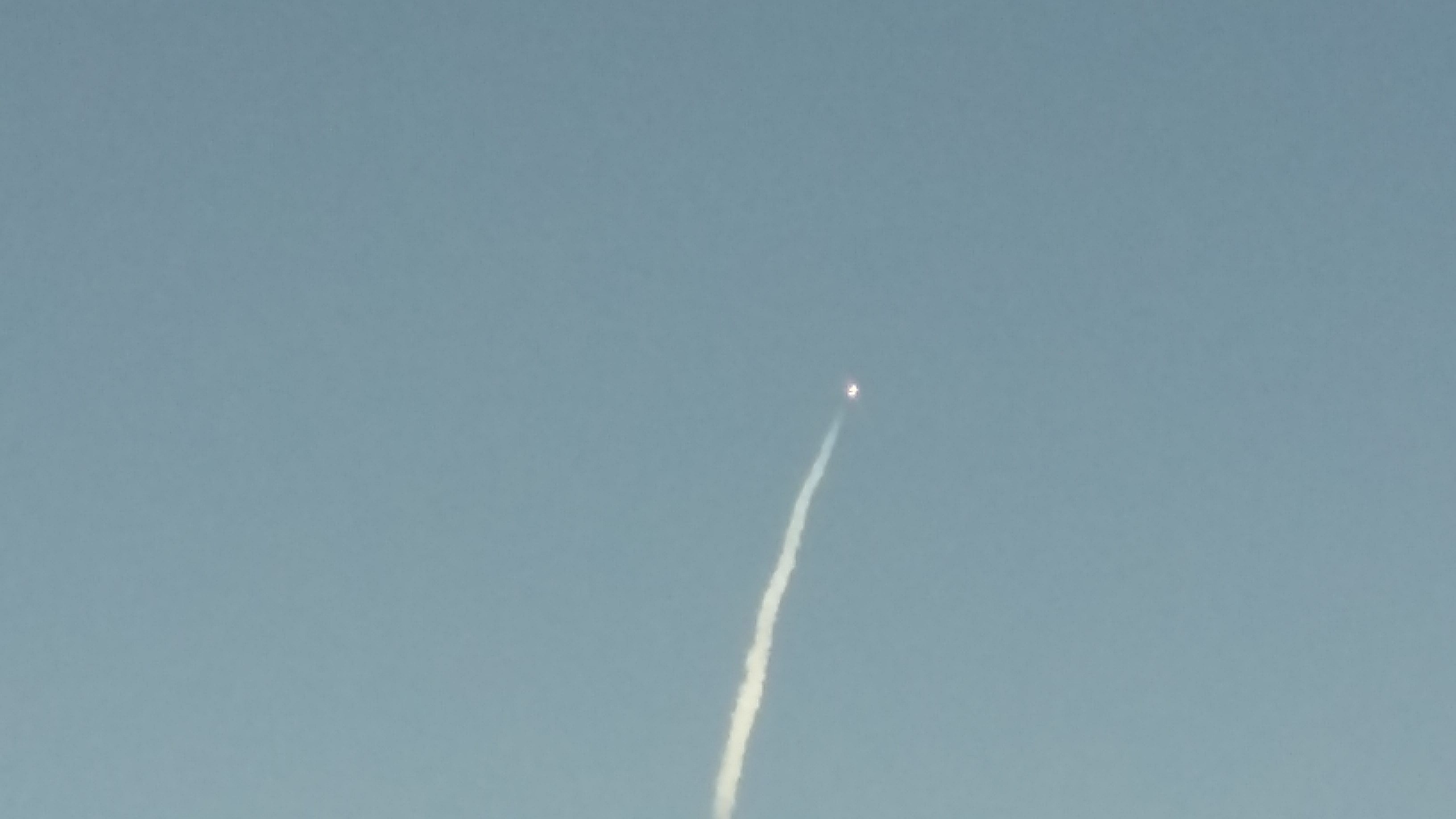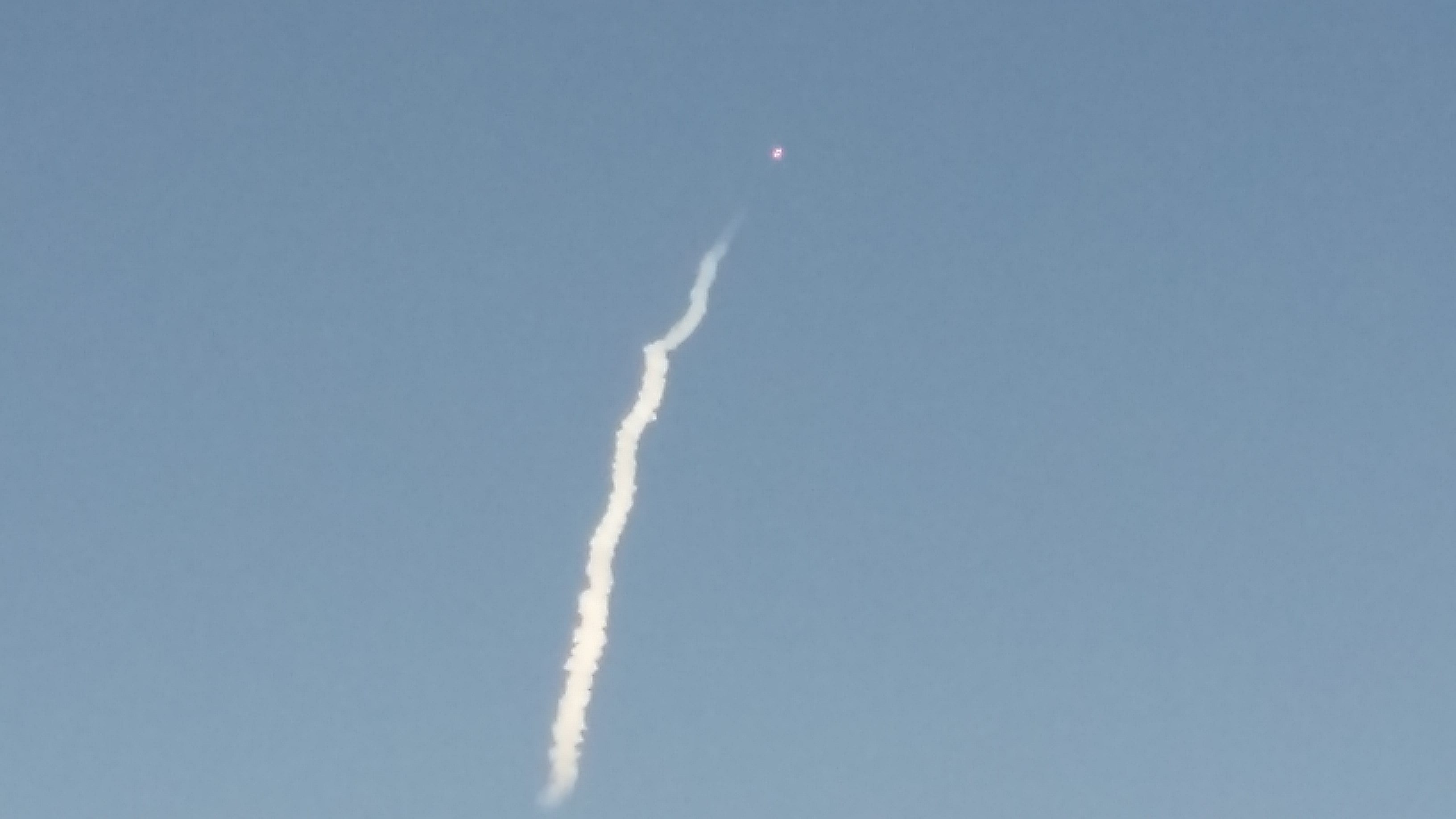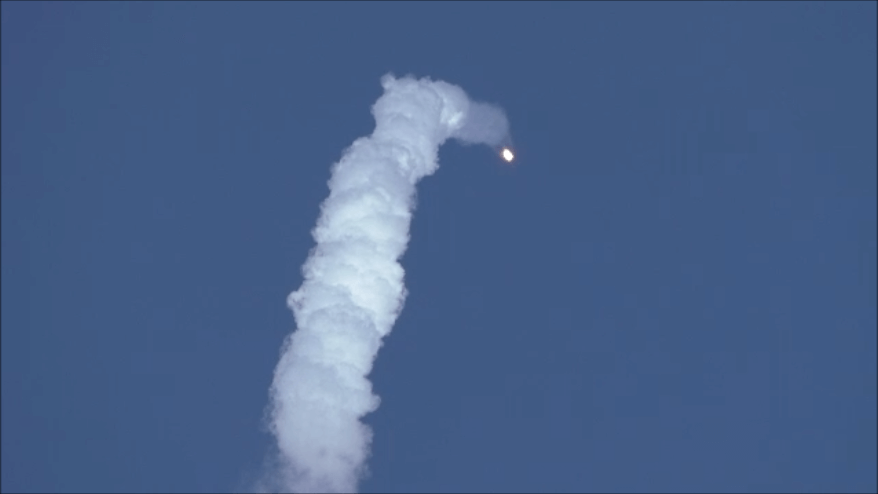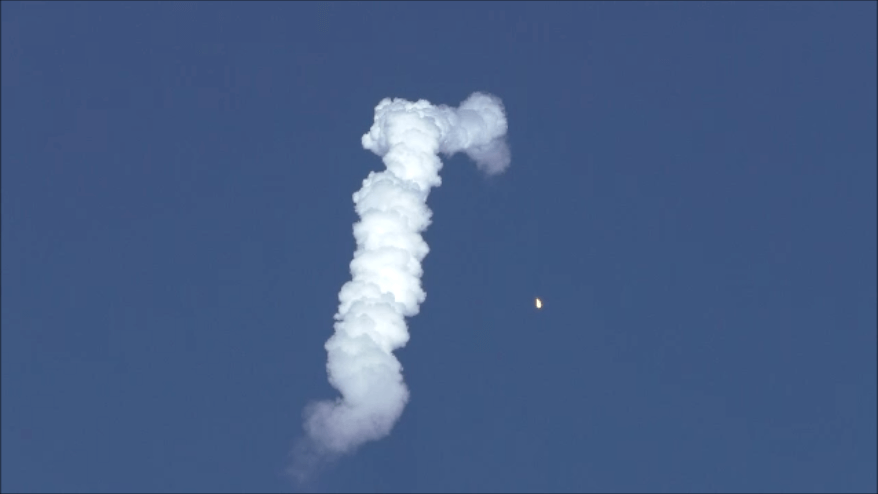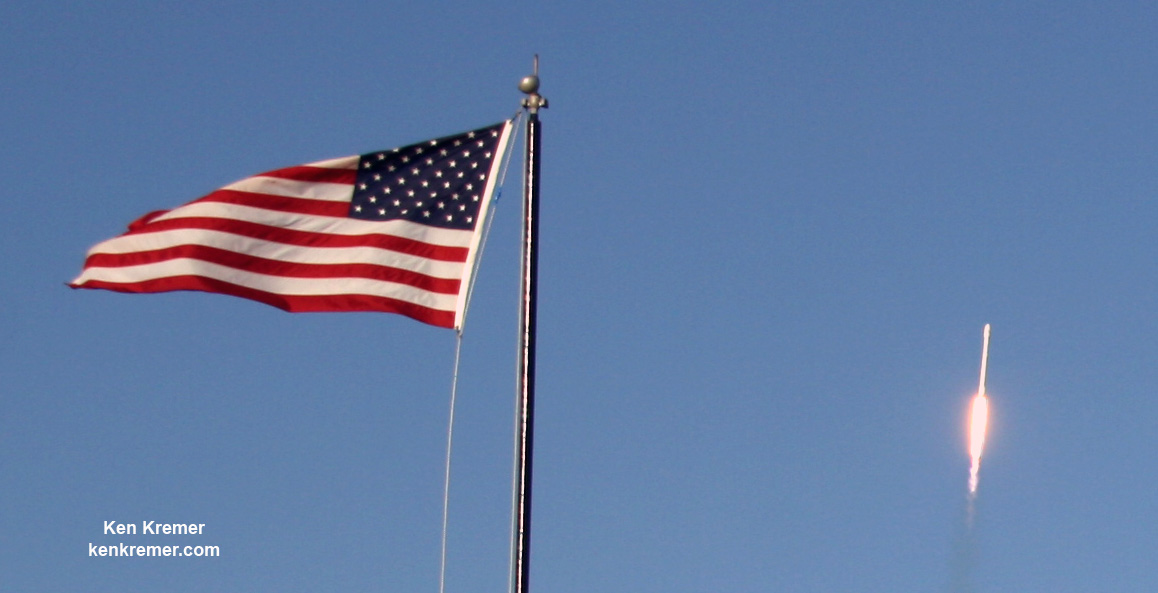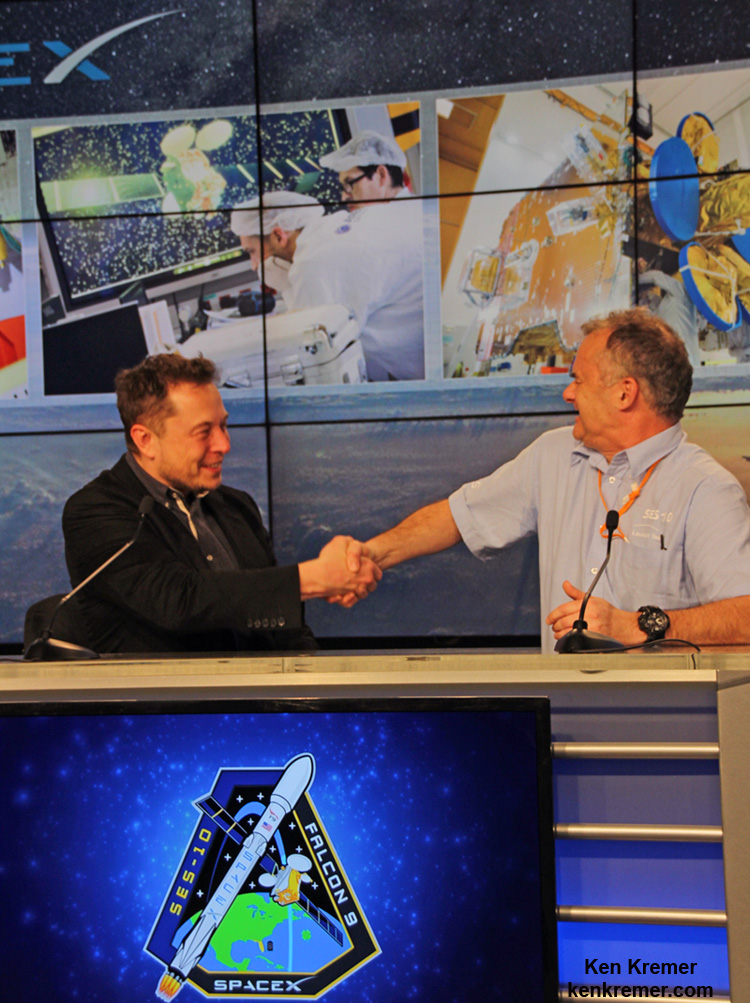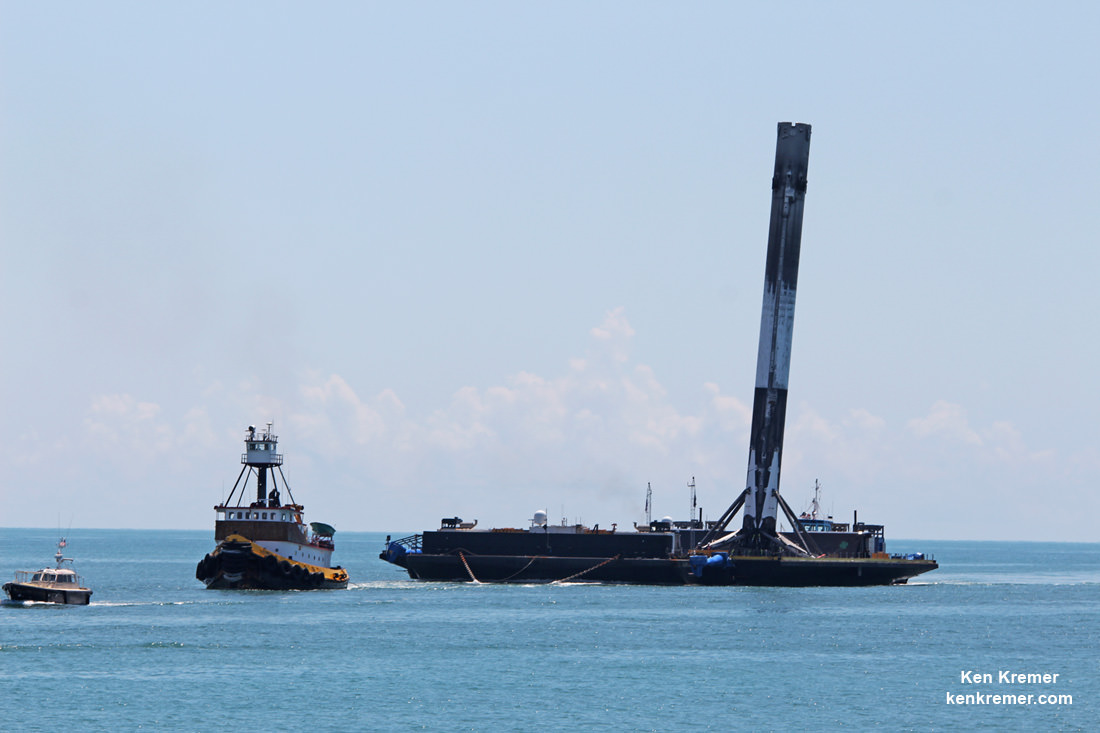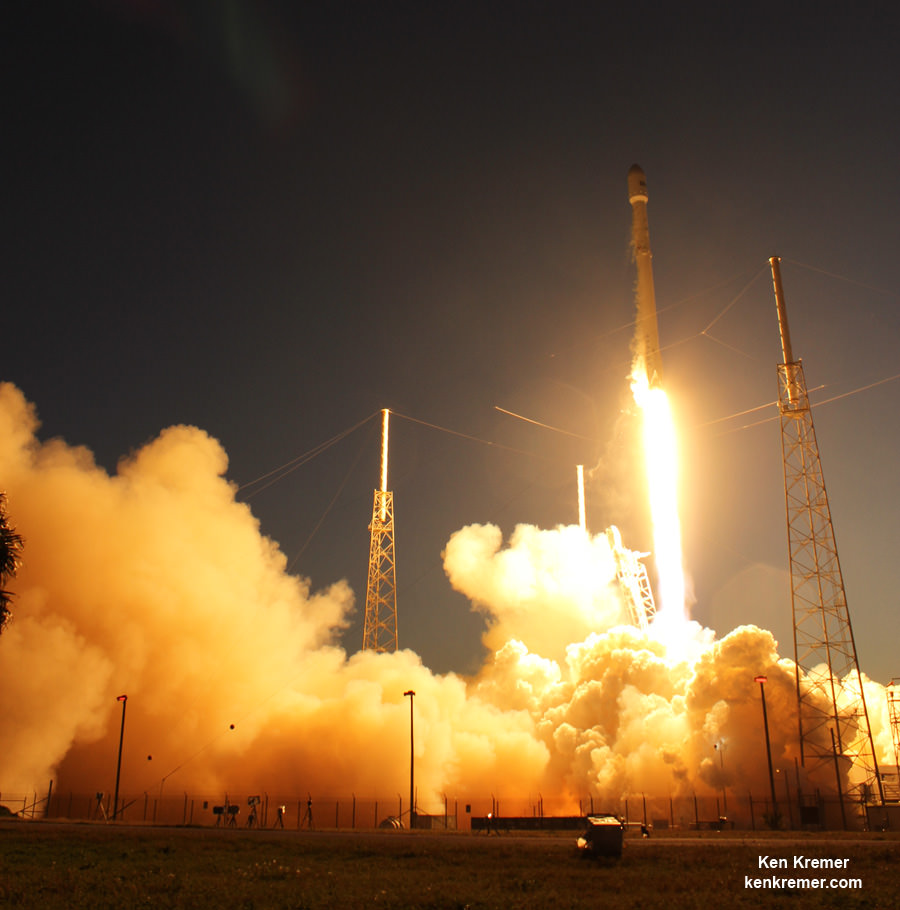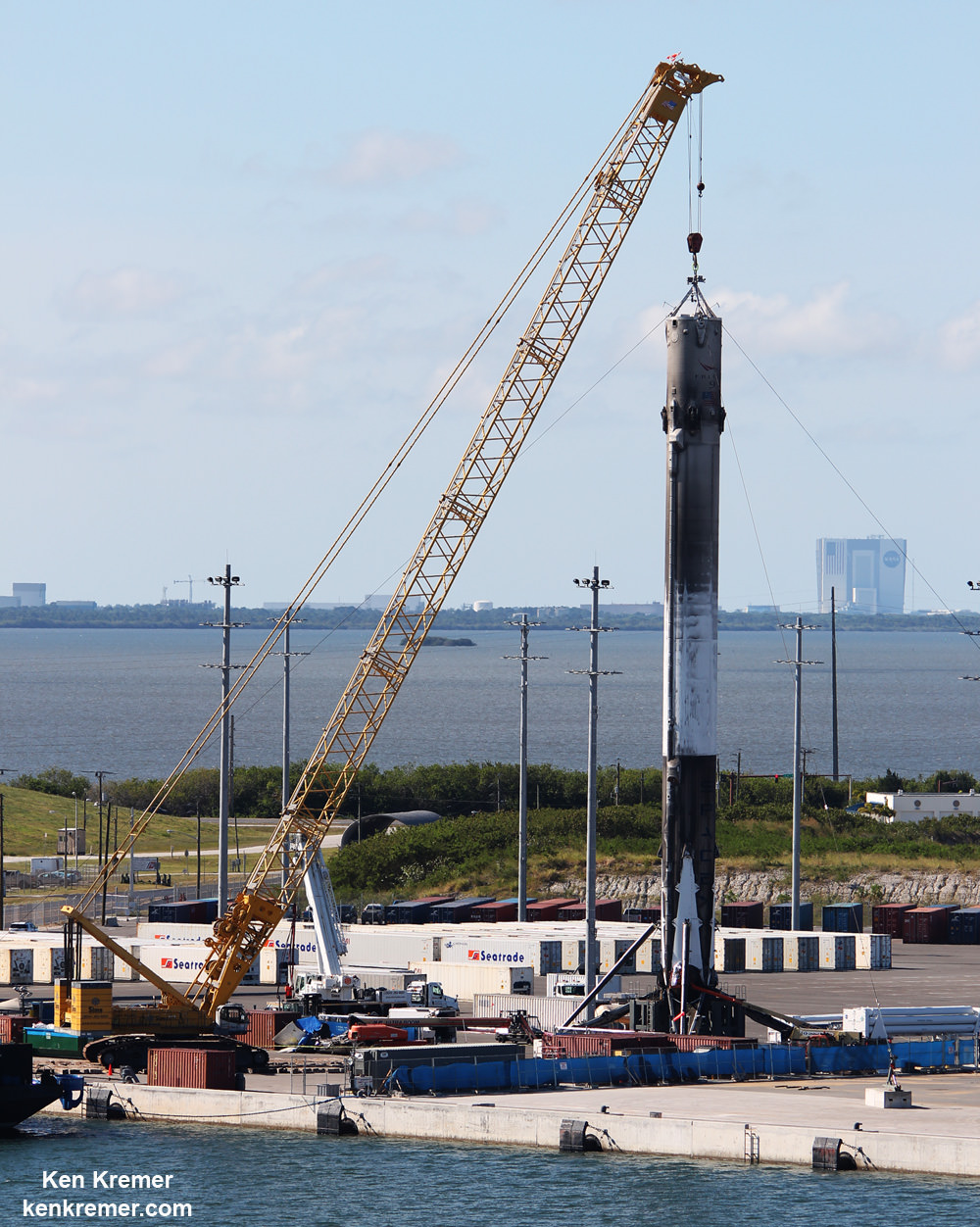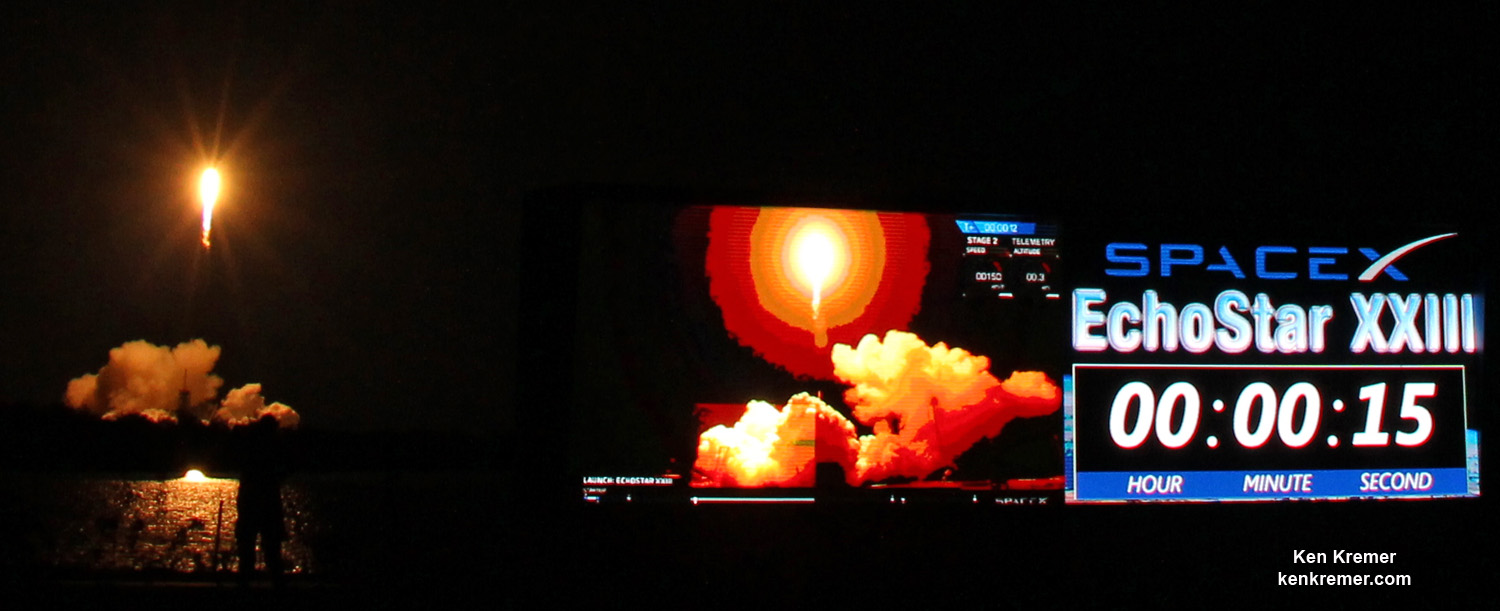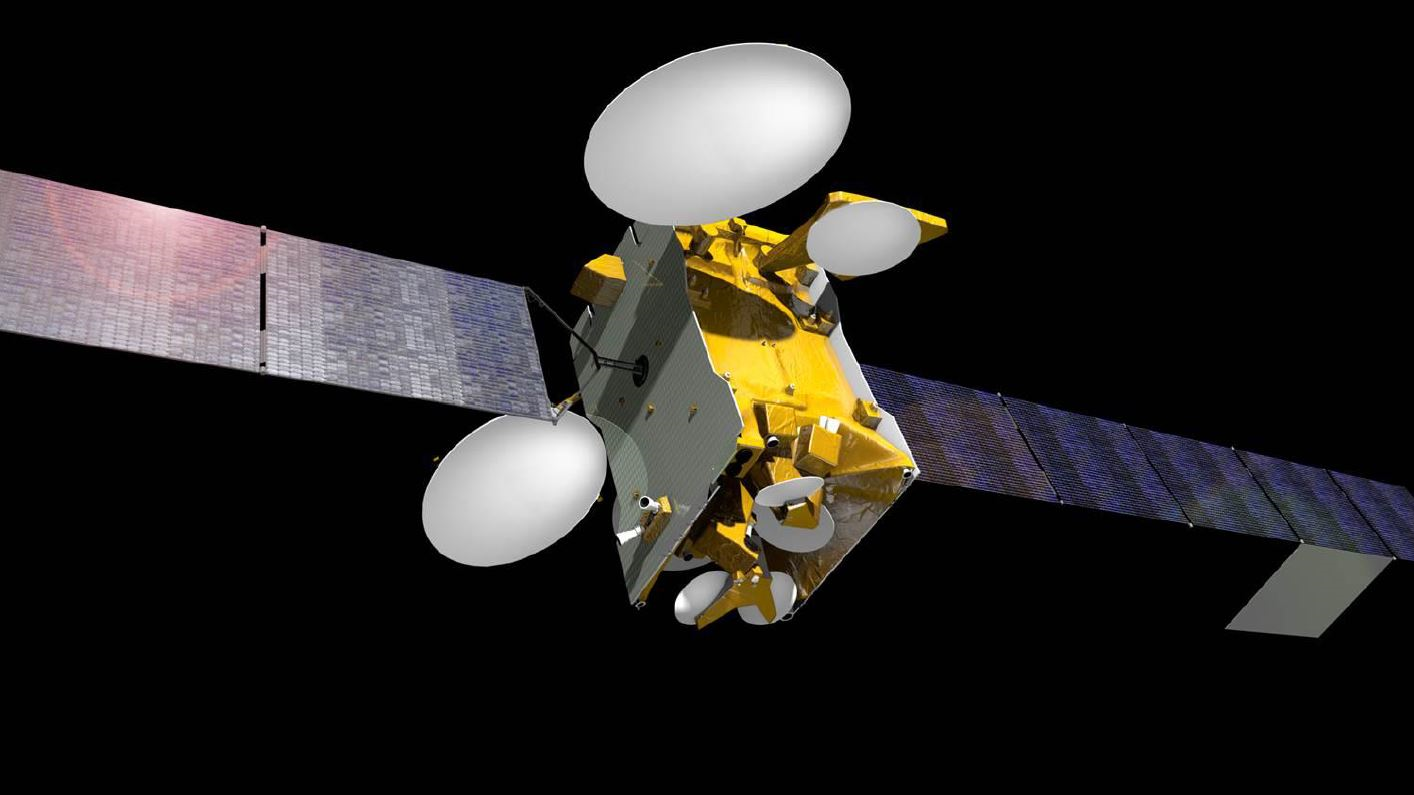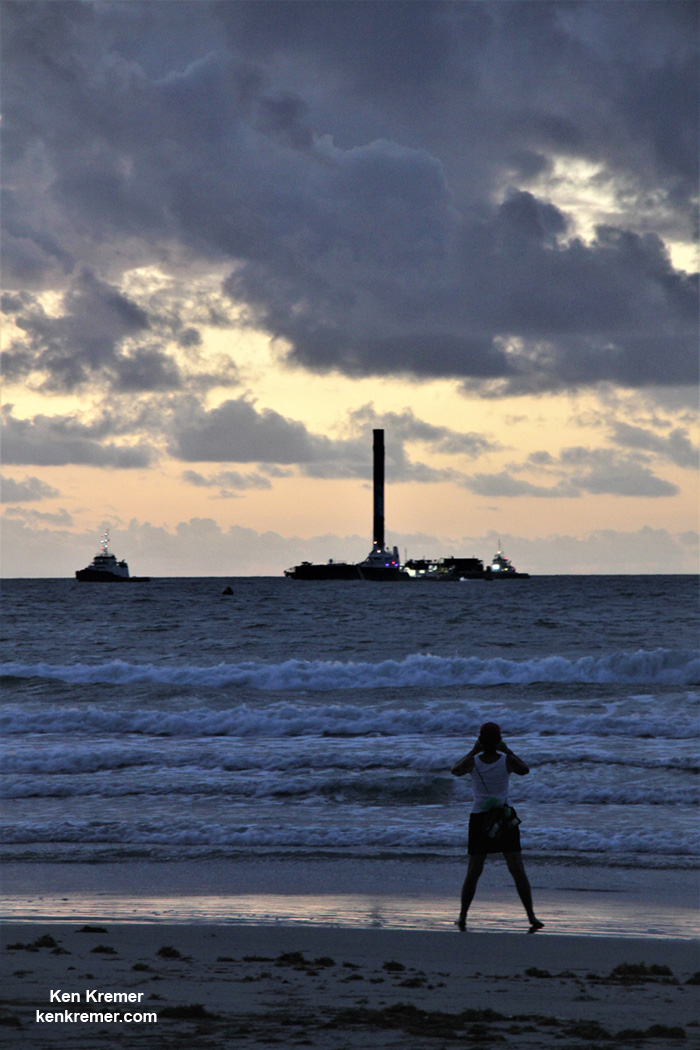
PORT CANAVERAL/KENNEDY SPACE CENTER, FL – The now twice flown SpaceX first stage booster that successfully delivered the SES-11 UHDTV satellite to orbit at sunset Wednesday, Oct 11, sailed proudly back home into Port Canaveral during a beautiful Sunday sunrise, Oct. 15 only three days after it safely landed on a tiny droneship at sea.
The booster arrival also took place just hours after a ULA Atlas launched the covert NROL-52 surveillance satellite for the US National Reconnaissance Office (NRO) – making for a nonstop day of space action on the Florida Space Coast.
The 156-foot-tall Falcon 9 booster accomplished a precision guided rocket assisted touchdown on the football field sized OCISLY droneship platform about 8 minutes after the dinnertime liftoff with the private SES-11/EchoStar 105 communications satellite on Oct. 11 at 6:53 p.m. EDT from seaside Launch Complex 39A at NASA’s Kennedy Space Center in Florida.
The 15 story tall first stage came to rest slightly tilted a few degrees, similar to at least two prior boosters that soft landed upright on OCISLY while prepositioned several hundred miles off shore of the Florida peninsula in the Atlantic Ocean.
The recycled booster was towed into Port Canaveral by a SpaceX contracted tugboat accompanied by a small fleet of pilot ships and support vessels.
The doubly used and doubly successful booster entered the mouth of Port Canaveral around 7:15 a.m. EDT Sunday under dawns delightful twilight I witnessed from Jetty Park and beach together with a few space media colleagues and a small crowd of onlookers with little fanfare.
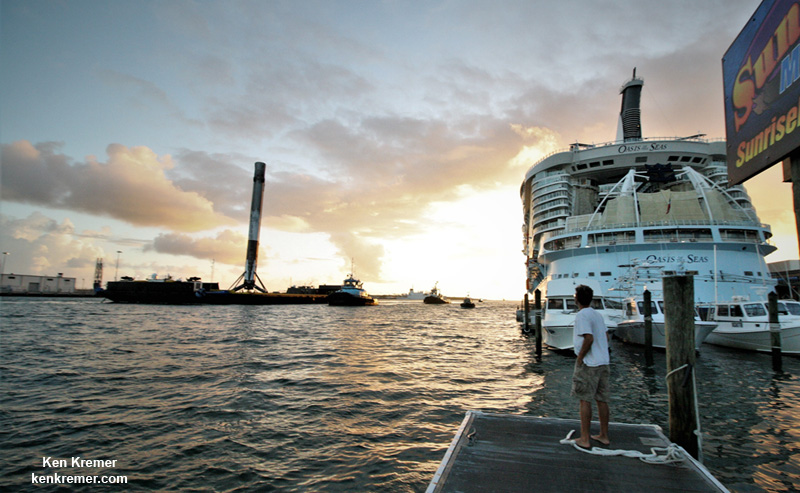
Over the next hour it was hauled through the narrow channel as numerous vessels large and small and pleasure craft sailed by, likely wondering what they were looking it.
Finally the droneship platform was docked at SpaceX’s spot leased near the two huge shipping cranes dominating the scene across from popular portside restaurants – and also not far from humongous cruise ships dwarfing the booster in size.
The next step was for dock workers to hoist a cap and attach it to the top of the booster. This enabled it to eventually be carefully raised off the barge with a crane by about 1 p.m. and then slowly moved and swung over and affixed onto a restraining pedestal stand on land.


By the next evening Monday night, all 4 landing legs were still intact. After they are all detached the booster will be lowered horizontally aided by the cabling attached by the workers and placed on a flab bed transporter and trucked back to the Cape.
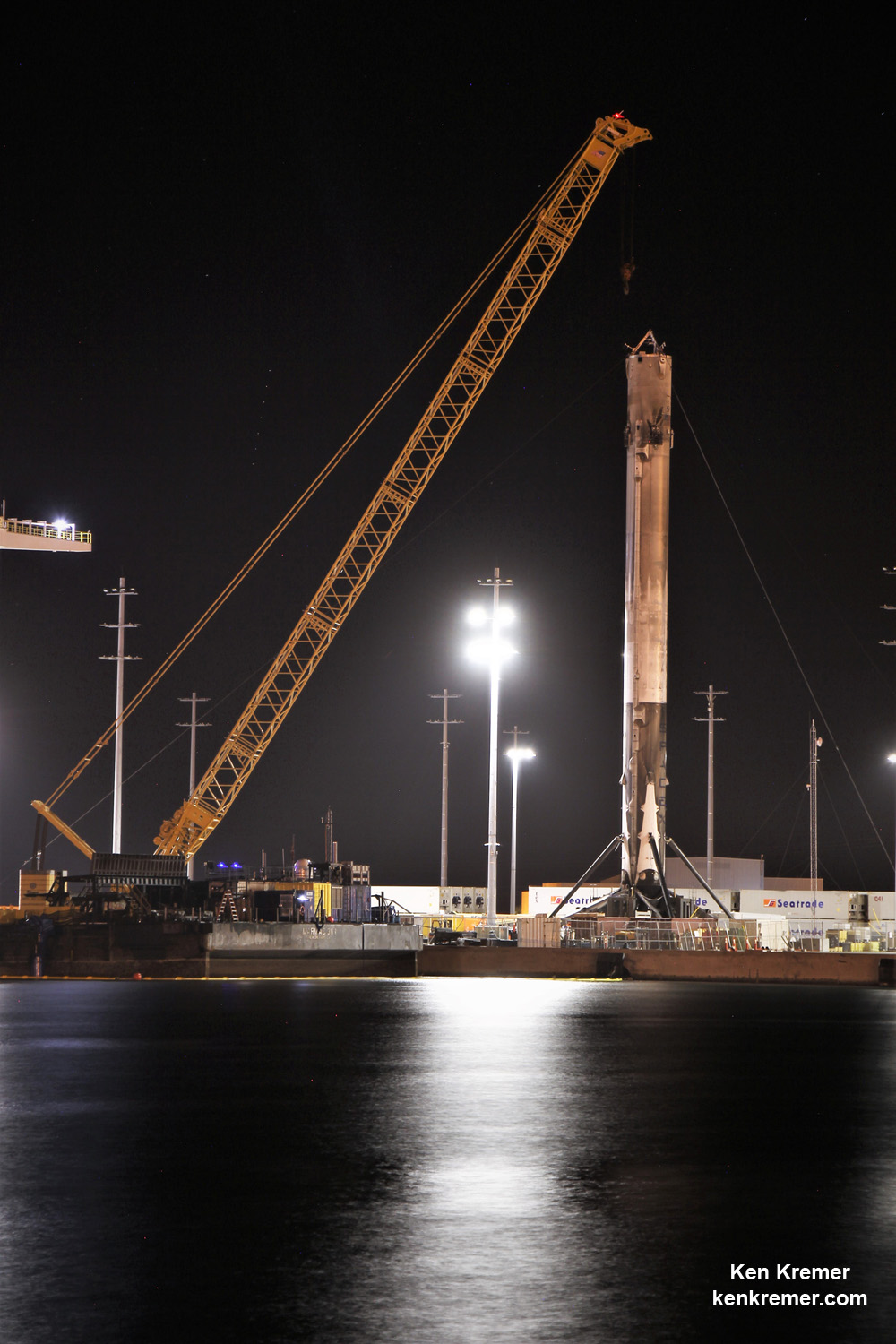
However the impact of developing and reusing ‘used’ rockets is leading to an era when re-flown rockets are offered as a ‘routine service’ rather than the exception.
Rocket reusability is at the heart of the extraordinary vision of billionaire entrepreneur and SpaceX CEO Elon Musk to drastically cut space launch costs and one day build a ‘City on Mars’.
And it represents a ‘major sea change getting closer’ to fruition with each passing day thanks to SpaceX, said SES CTO Martin Halliwell in an exclusive interview with Universe Today, following the stunning sunset blastoff of the SES-11 UHDTV commercial satellite on another ‘flight-proven’ Falcon 9 booster that also re-landed – thus completing another remarkable round of rocket recovery and recycling or ‘launch, land and relaunch!’
“As I’ve said before, I think in a couple years time you won’t even consider whether it’s a preflown rocket or a new rocket or a second time rocket,” SES Chief Technology Officer Martin Halliwell told Universe Today in a one-on-one post launch interview.
“It will just be a flight and you will buy a service to get to orbit – and that will be that!”
“It’s a major sea change,” Halliwell explained. “That’s absolutely true.”
“We’re getting closer to that every day. It’s exactly where we are going. There is no doubt about it.”
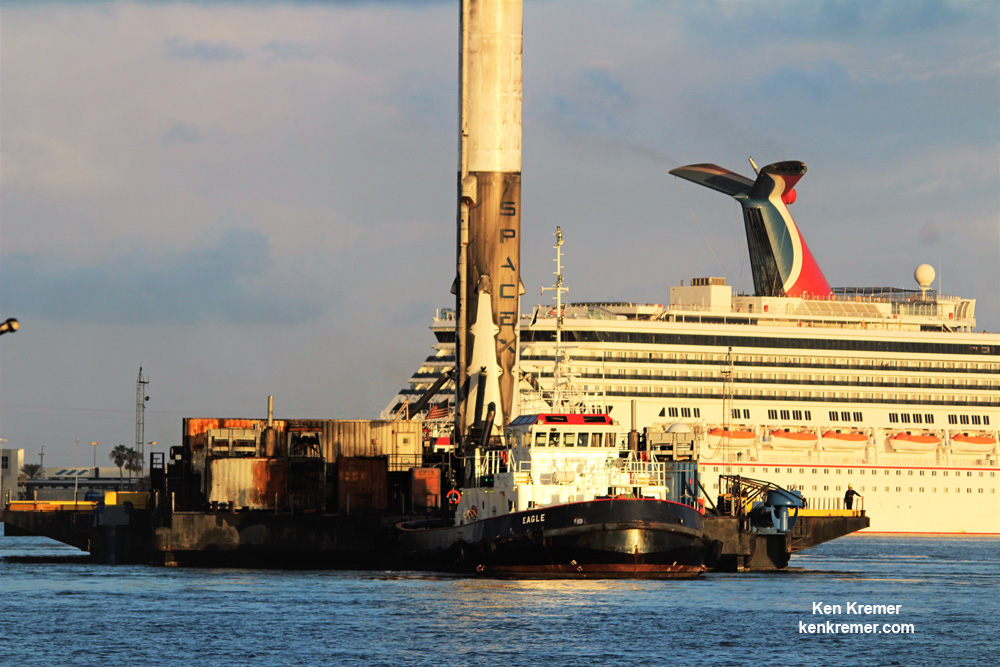
The launch of EchoStar 105/SES-11 counts as only the third recycled SpaceX Falcon 9 ever to be launched and is the third successful mission with a flight-proven orbital class rocket.
All three ‘flight-proven’ missions have lifted off from Pad 39A this year and all three have relanded.
The Falcon 9 first stage appeared to be in good shape upon its return to Port. I did not observe noticeable significant damage to the outside of the booster skin, grid fins or landing legs. Scorching seemed comparable to the first two reflown boosters.
This booster originally flew on the NASA Dragon CRS-10 resupply mission to the International Space Station in February of this year.
On arrival it was clearly anchored to the OCISLY droneship deck with multiple chains as previously done for droneship landings as well as with what appears to be several gripper arms.
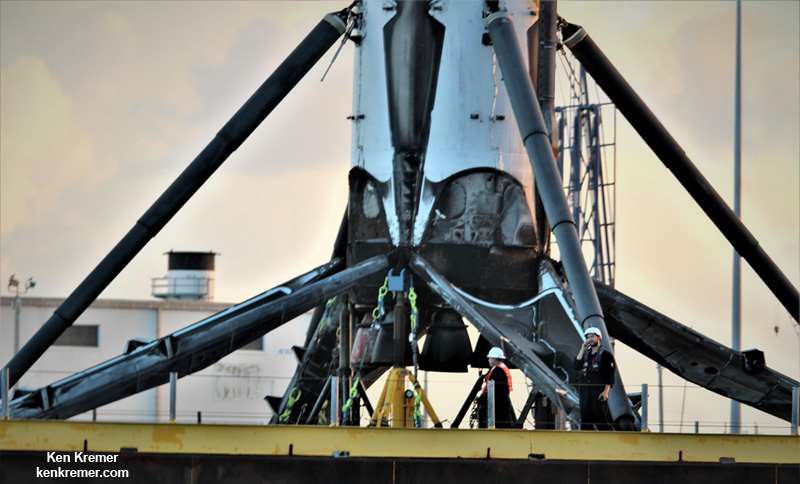
OCISLY, which stands for “Of Course I Still Love You,” had departed Port Canaveral several days ahead of the Oct. 11 launch and was prepositioned in the Atlantic Ocean off the US East coast, just waiting for the boosters 2nd approach and pinpoint propulsive soft landing.
The booster was outfitted with four grid fins and four landing legs to accomplish the pinpoint touchdown on the barge at sea.

SES was the first company to ever fly a payload on a ‘flight-proven’ Falcon 9. The SES-10 satellite lifted off successfully this spring on March 30, 2017.
The second reflown booster successfully launched the BulgariaSat-1 a few months later.
NASA is also assessing whether to utilize a reflown booster on upcoming ISS resupply missions – starting with the next flight of the Dragon CRS-13 cargo ship which may liftoff as soon as early December.
Pad 39A has been repurposed by SpaceX from its days as a NASA shuttle launch pad.
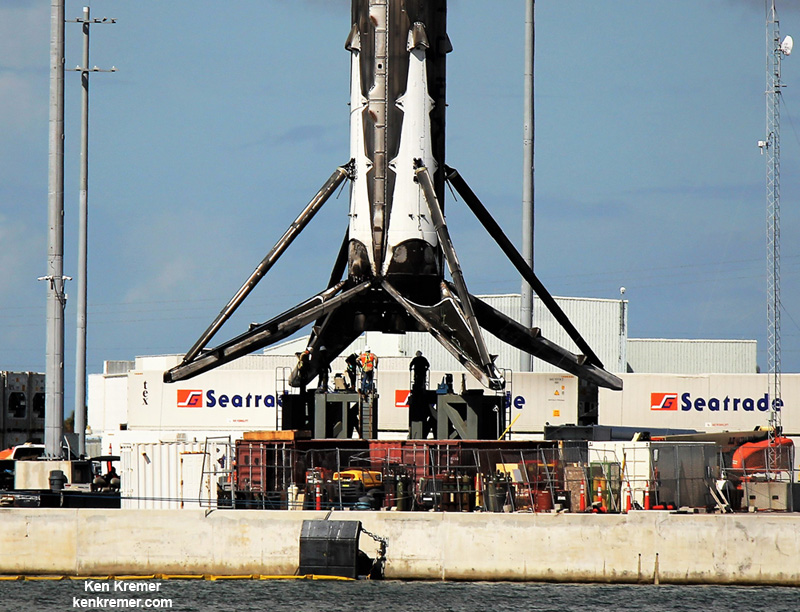
To date SpaceX has accomplished 18 successful landings of a recovered Falcon 9 first stage booster by land and by sea.

Watch for Ken’s continuing onsite coverage of SpaceX SES-11, ULA NROL-52 and NASA and space mission reports direct from the Kennedy Space Center and Cape Canaveral Air Force Station, Florida.
Stay tuned here for Ken’s continuing Earth and Planetary science and human spaceflight news.
